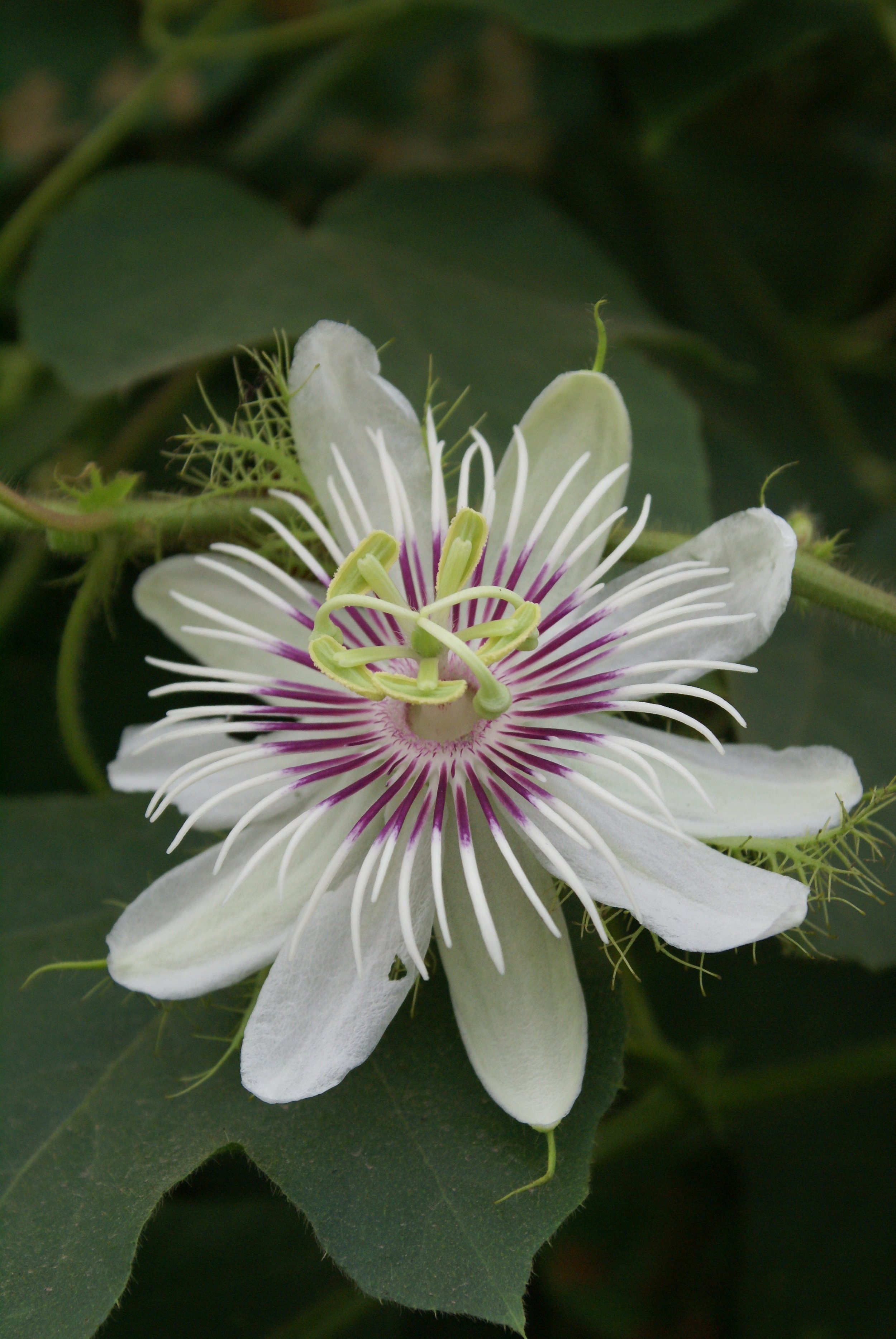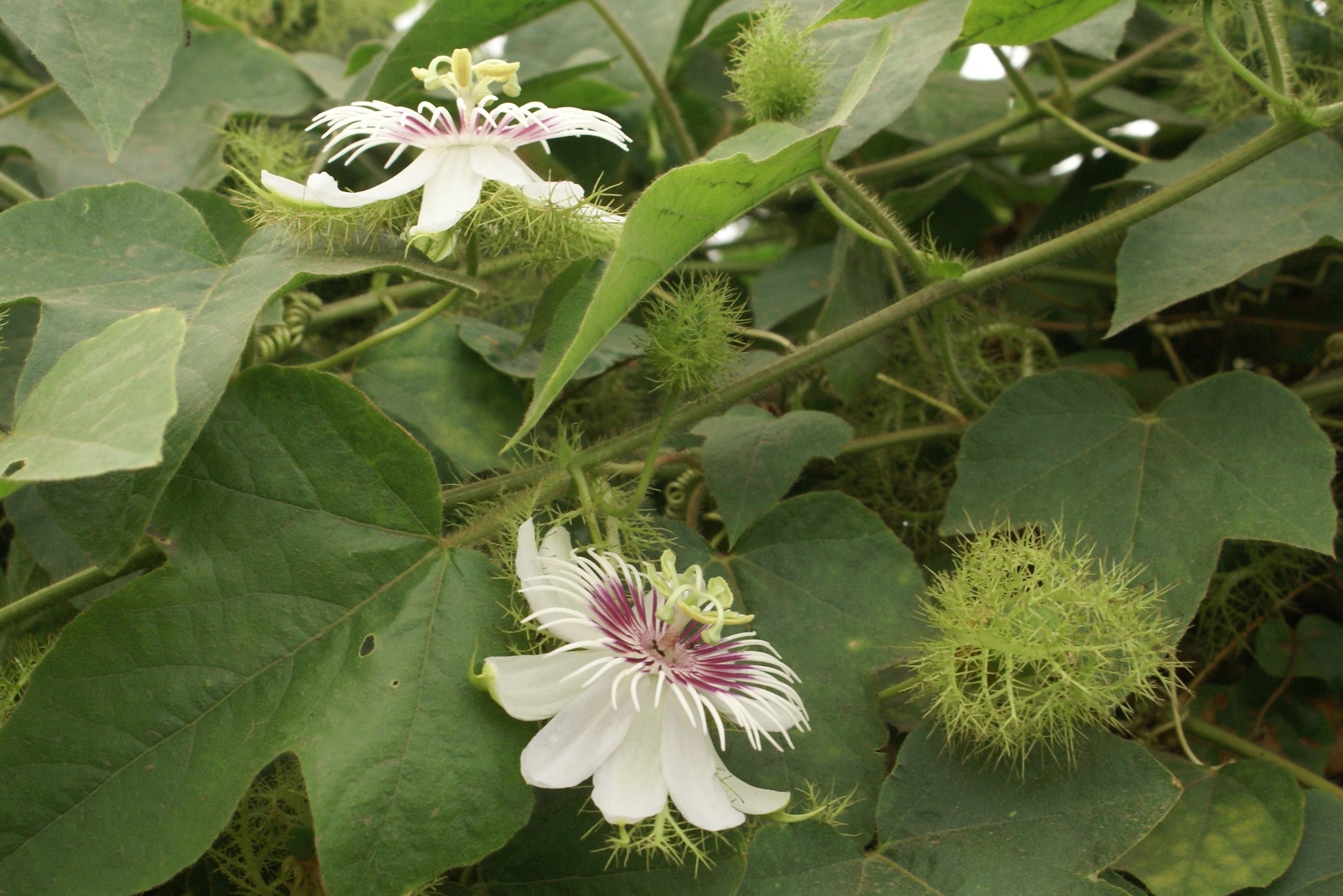Photo by B.navez licensed under the GNU Free Documentation License.
For a plant to be considered carnivorous, it must possess one or more traits unequivocally adapted for attracting, capturing, and/or digesting prey. It also helps to demonstrate that the absorption of nutrients has a clear positive impact on growth or reproductive effort. For plants like the Venus fly trap or any of the various pitcher plants out there, this distinction is pretty straight forward. For many other species, the line between carnivorous or not can be a little blurry. Take, for instance, the case of the stinking passionflower (Passiflora foetida).
At first glance, P. foetida seems par for the course as far as passionflowers are concerned. It is a vining species native from the southwestern United States all the way down into South America. It enjoys edge habitats where it can scramble up and over neighboring vegetation. It produces large, showy flowers followed by edible fruits. When the foliage is damaged, it emits a strong odor, earning it the specific epithet “foetida.”
Not until you inspect the developing floral buds of this passionflower will the question of carnivory enter into your mind. Covering the developing flowers and eventually the fruit are a series of feathery bracts, which are covered in glandular hairs. The hairs themselves are quite sticky thanks to the secretion of fluids. As insects crawl across the hairs, they become hopelessly entangled and eventually die. So, does this make P. foetida a carnivore?
Photo by B.navez licensed under the GNU Free Documentation License.
Many different plants produce sticky hairs or glands on their tissues. Often this is a form of defense. Herbivorous insects looking to take a bite out of such a plant either get stuck outright or have their mouth parts completely gummed up in the process. This form of defense seems to work quite well for such plant species so simply trapping insects doesn’t mean the plant is a carnivore. Worth noting, however, is the fact that it appears that many carnivorous plant traits have simply been retooled from defense traits.
The question remains as to what happens to the trapped insects after they are ensnared by P. foetida. Observations in the field suggest that there is more to these sticky hairs than simply defense. This led a team of researchers to look closer at the interactions between P. foetida and insects. What they found is rather fascinating.
It turns out that most of the insects captured by P. foetida bracts are herbivores that would have made an easy meal of the flowers and fruits. However, after getting stuck, the insect bodies quickly decay. Laboratory analyses revealed that indeed, the fluids secreted by the sticky hairs contained lots of digestive enzymes, mainly proteases and acid phosphatases. Still, this does not mean the plant is eating the insects. It makes sense from a defensive standpoint that a plant would not benefit from having lots of rotting corpses stuck to its buds. As such, digesting them removes the possibility of fungal or bacterial attack. To investigate whether P. foetida benefits from trapping insects beyond simply avoiding herbivory, the team needed to know if any nutritional benefit was being had.
Photo by Vvenka1 licensed under CC BY-SA 2.5
The team took amino acids marked with a special carbon isotope and smeared it onto the bracts. Then they waited to see if any of the labelled amino acids showed up in the plant tissues. Indeed they did. The amino acids were absorbed by the bracts and translocated to the calyx, corolla, anthers, and finally to the developing ovules. This is probably not too surprising to those of us that spend time growing plants as numerous plant species can uptake at least some nutrients through their leaves. This is why foliar feeding can work as a means of fertilizing potted plants. Nonetheless, these results are enticing as it shows that P. foetida is not only capturing and dissolving insects, it also seems capable of absorbing at least some amino acids from its victims.
So, should we call P. foetida a carnivore? To be honest, I am not sure. Certainly all of the evidence suggests there is more going on than simply defense. However, does garnering the attention of hungry herbivores constitute prey attraction? Certainly other carnivores utilize food deception as a means of prey capture. Does simply being a palatable plant count as a lure? Does absorbing nutrients constitute carnivory? In some instances, yes, however, as mentioned, plenty of plant species can absorb nutrients from organs other than their roots.
I think the main question is whether P. foetida sees a marked increase in growth or reproduction due to the addition of the dead herbivores. What I think we can say is that the sticky bracts surrounding the flowers and fruits serve a dual purpose - defense against herbivores and potentially a nutrient boost as well. If anything, I think this should qualify as a form of protocarnivory.


